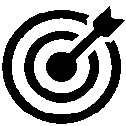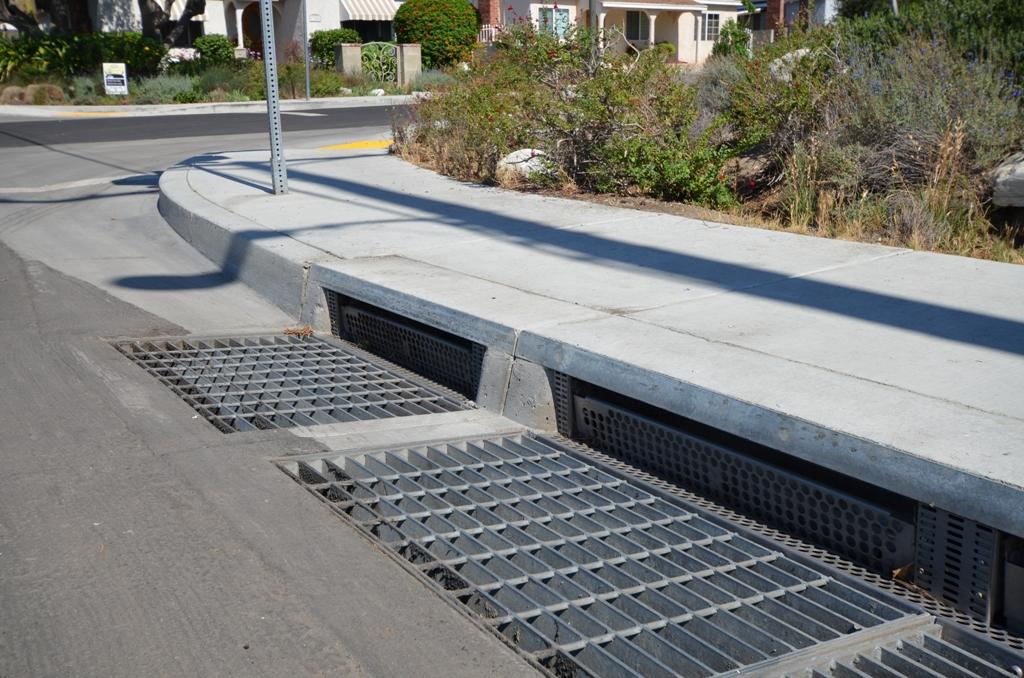PURPOSE
 Per LAMC 64.12, in order for a property owner to connect to the City of Los Angeles storm drain system, property owners shall obtain and pay for an Storm Drain Connection Permit. The Storm Drain (SD) Connection Permit is issued at any District office and can be issued over the counter.
Per LAMC 64.12, in order for a property owner to connect to the City of Los Angeles storm drain system, property owners shall obtain and pay for an Storm Drain Connection Permit. The Storm Drain (SD) Connection Permit is issued at any District office and can be issued over the counter.
 A Storm Drain Permit is required if connections are made from the property line to a catch basin or a storm drain pipe in the public right-of-way. The storm water is collected in area drains on private property. The area drains may be connected to the storm drain connection pipe at the property line.
A Storm Drain Permit is required if connections are made from the property line to a catch basin or a storm drain pipe in the public right-of-way. The storm water is collected in area drains on private property. The area drains may be connected to the storm drain connection pipe at the property line.
If an Applicant wishes to perform any work in the public right of way, a Bonded Sewer Contractor (BSC) is required to obtain the permit and carry the appropriate license(s), insurance, and bonds (LAMC 64.15(e)).
BCA is also required to inspect and approve all construction within the public right-of-way, per LAMC 64.15. The fees for inspection are collected under the SD-Permit and may include Special Inspection fees when necessary.
DEFINITIONS
 A Storm Drain system in the City of Los Angeles means any facilities or any part of those facilities, including streets, gutters, conduits, natural or artificial drains, channels and watercourses that are used for the purpose of collecting, storing, transporting or disposing of. Components of the Storm Drain facilities and other components of the system include:
A Storm Drain system in the City of Los Angeles means any facilities or any part of those facilities, including streets, gutters, conduits, natural or artificial drains, channels and watercourses that are used for the purpose of collecting, storing, transporting or disposing of. Components of the Storm Drain facilities and other components of the system include:
Additional information about the types of permits an Applicant should apply for based on the scope of work, can be found under "Other BOE Permits/Processes, Technical Procedures, Permit Classification Matrix".
- Catch Basin Connection - A storm drain conduit which conveys surface runoff from a catch basin or catch basins to a trunk line, a main line, or a lateral.
- Storm Drain Lateral - A storm drain conduit which outlets into a trunk line when considered as a part of a storm drain system. In terms of a storm drain project, a lateral is a conduit which outlets into the main line.
- Storm Drain Main Line - The principal conduit of a storm drain project. A main line collects flow from laterals and catch basin connections
- Storm Drain Trunk Line - The major collector conduit of a storm drain system. Trunk lines accept flows from smaller contributing storm drains and generally outlet into major or secondary watercourses
- Watershed - A drainage area bounded on three sides by ridges where flow by gravity of all runoff within the area drains ultimately to a particular watercourse or valley street which outlets on the fourth side. The fourth side is established when its flow joins the flow of an adjacent watershed.
- River: A large stream of water which serves as the natural drainage channel for a watershed of considerable area.
- Watercourse: A natural stream of water flowing in a particular direction in a definite channel having a bed and banks. It need not flow continually, nor is it restricted as to property ownership.
Bonded Sewer/Storm Drain Contractor
A list of pre-approved contractors that are pre-approved by the City of Los Angeles to perform sewer/storm construction in the public right-of-way. Per LAMC 64.15.1(b), only approved Bonded Sewer Contractors can obtain sewer/storm drain permits for construction in the public right-of-way. Bonded Sewer Contractor approvals are valid for one year only. The listing of approved bonded sewer contractors can be found at the S Permit website (access is through BOE's Customer Service Portal). Procedures for how to become a bonded sewer contractor can be found in the Bonded Sewer Contractor Information Package and Procedures. City staff shall verify current bond deposit limits per LAMC 64.15.1(b) - Liability and Insurance Deposit Requirements, Deposits.
Discharge
Discharge Means any release, spill, leak, pump, flow, escape, dumping, or disposal of any liquid, semi-solid or solid substance.
Per LAMC 64.70.01, discharge means any release, spill, leak, pump, flow, escape, dumping, or disposal of any liquid, semi-solid or solid substance.
LAMC 64.70.02 and LAMC 64.70.03 discuss discharge prohibitions and exemptions. A BOE SD-Permit is required if you are physically connecting into the City's system through a storm drain , catch basin, or similar structure. In addition, Applicants would be required to show proof the discharge is listed in LAMC 64.70.03 A 1 or 2 and how BMPs would be managed.
Best Management Practice (BMP)
Activities, practices, facilities and/or procedures that, when implemented, will reduce or prevent pollutants in discharges.
National Pollutant Discharge Elimination System (NPDES)
The national program for issuing, modifying, revoking and reissuing, terminating, monitoring and enforcing permits, and imposing and enforcing pretreatment requirements under Sections 307, 402, 318 and 405 of the CWA. The term includes an "approved program."
Stormwater Pollution Prevention Plan (SWPPP)
A plan, as required by a State General Permit, identifying potential pollutant sources and describing the design, placement and implementation of BMPs, to effectively prevent non-stormwater discharges and reduce pollutants in stormwater discharges during activities covered by the General Permit.
Industrial Wastewater
Liquid and water-carried waste other than domestic sewage. Wastewater generated from household type operations, including, but not limited to, dish washing, laundry and car washing, performed at commercial establishments for or to support commercial purposes is considered industrial wastewater.
Industrial Wastewater Permit (not a construction permit)
A permit issued by the Board per LAMC 64.30. LAMC 64.30.3 provides for the regulation of dischargers to the Publicly Owned Treatment Works (POTW) through the issuance of Industrial Wastewater Permits containing specific discharge requirements and through enforcement of general discharge prohibitions; authorizes monitoring and enforcement activities; imposes reporting requirements on specific permittees; and sets fees for the recovery of program costs. This permit shall apply to all dischargers within the City of LA and to all dischargers outside the City of LA who discharge to the City’s POTW except as otherwise provided herein, the Director of the Bureau of Sanitation under the jurisdiction of the Board of Public Works shall administer, implement and enforce the provisions of this section.
As a part of the permit and inspection program provided, the Board and the Director shall have the power, jurisdiction, and supervision over places of discharge of wastewater into the POTW, necessary to adequately enforce and administer all laws and lawful standards and orders, or special orders, to assure the implementation of the following objectives:
- Prevent any discharge into the POTW which may interfere with the operations thereof;
- Prevent any discharge into the POTW which will pass through the POTW, inadequately treated, into receiving waters, land or the atmosphere or otherwise be incompatible with the POTW;
- Protect the POTW, from damage by any pollutants;
- Provide the opportunity to recycle and reclaim sludges and wastewater from the POTW;
- Provide for recovery of costs, including administration, implementation and enforcement of the program established herein, associated with the discharge of wastewater to the POTW;
- Protect the life, health, and safety of operating and maintenance personnel;
- Preserve hydraulic capacity in the POTW;
- Insure the health, safety and welfare of the public.
LAWS, CODES, AND REGULATIONS CONCERNING THE ISSUING OF SEWER CONNECTION PERMITS
The following Municipal Codes apply to SD-Permits:
- LAMC Section 64.12 - House Sewer Connection Permit
- LAMC Section 64.14 - Duration and Revocation of Permits
- LAMC Section 64.15 – Permit and Inspection Fees
- LAMC Section 64.15.1 – Liability Insurance and Deposit Requirements
- LAMC 64.16 – Exemptions from Liability Insurance and Deposit
- LAMC 64.20 – Tapping Sewers, Storm Drains, and Catch Basins
- LAMC 64.22.1 – Permit Fee Exemptions
- LAMC 64.23 – Drains, Sewers, Etc. – Notice of Abandonment
- LAMC 64.25 – Investigation on Private Property
- City of Los Angeles Brownbook
- White Paper - Street Damage Restoration Fee Ordinance (December 6, 2018)
Comments